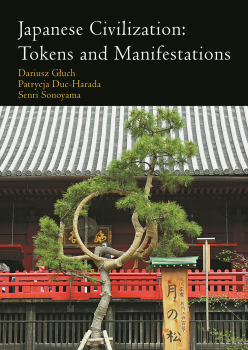How to Walk the Dewy Path. Roji (a Dewy Path?) as Seen in Nanbō Sōkei’s "Nanpōroku"
Synopsis
Published
9 December 2019
Categories
Copyright (c) 2019 individual authors
How to Cite
Zalewska, A. (2019) “How to Walk the Dewy Path. Roji (a Dewy Path?) as Seen in Nanbō Sōkei’s ‘Nanpōroku’”, in Duc-Harada, P., Głuch, D., and Sonoyama, S. (eds.) Japanese Civilization: Tokens and Manifestations. Poland: Księgarnia Akademicka Publishing. doi:10.12797/978838138072.18.





